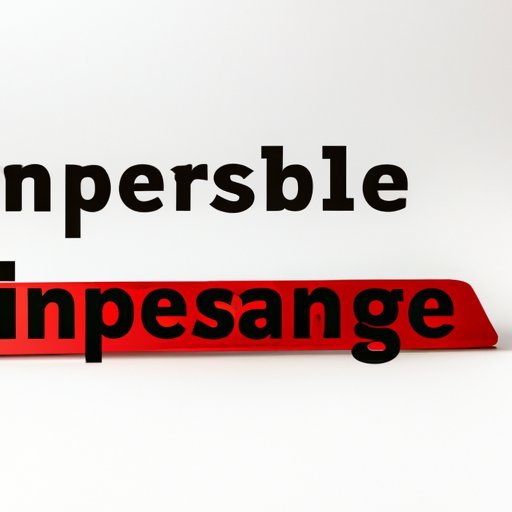
Introduction
Imagine you’re facing a medical emergency, but you don’t have health insurance to cover the costs. What happens next? Unfortunately, this is a reality for millions of Americans who are uninsured or underinsured, and it’s a problem that needs to be addressed. In this article, we will explore the financial and societal impact of going to the hospital without insurance, share tips on navigating medical care without coverage, and offer hope for a brighter future.
Financial Consequences of Hospitalization Without Insurance
The financial consequences of going to the hospital without insurance can be staggering. Hospital bills can spiral out of control, causing patients to face long-term financial ruin. Uninsured patients are often charged significantly more for medical services than insured patients, adding to the already high cost of treatment. According to recent statistics, unpaid medical bills are one of the leading causes of bankruptcy in the US. For example, in 2015, one woman in California received a $233,000 hospital bill for a four-day stay after being diagnosed with pneumonia.
Navigating Medical Care Without Insurance
Even without insurance, there are ways to navigate the medical system and get the care you need. Start by researching affordable clinics and hospitals in your area, and don’t be afraid to negotiate with providers. Many hospitals offer financial assistance programs for patients who cannot afford to pay their bills, so be sure to ask about these options. There are also a variety of free or low-cost healthcare resources available, including clinics, prescription drug programs, and community health centers. To find resources in your area, visit HealthResources.net and HRSA.gov.
Societal Impact of Uninsured Hospitalization
The impact of uninsured hospitalization goes beyond the individual patient. Uncompensated care, or care provided to uninsured patients who cannot pay, has a significant economic impact on hospitals and taxpayers alike. According to a 2019 report from the Kaiser Family Foundation, the total uncompensated care cost in the US was $35 billion in 2017. These costs are often passed on to insured patients in the form of higher premiums and out-of-pocket costs. Furthermore, individuals who lack insurance coverage may delay seeking medical care until they need emergency services, leading to higher rates of hospitalizations and chronic illnesses.
Avoiding Hospitalizations Without Insurance
One way to avoid costly hospitalizations without insurance is to focus on preventive care. Regular check-ups, healthy lifestyle habits, and taking advantage of preventive care services, like flu shots and cancer screenings, can help you catch health problems before they become emergencies. If you have a chronic condition, it’s important to manage it carefully and seek help from local organizations that offer assistance for medication and medical supplies. And if you do find yourself in an emergency situation, be sure to ask about financial assistance programs or charity care options at your hospital.
Stories from the Uninsured in the Hospital
Personal stories from individuals who have faced hospitalization without insurance highlight the real-world impact of this crisis. One couple in Florida started a crowdfunding campaign to pay for their daughter’s heart surgery, while another woman in California had to file for bankruptcy after receiving a $100,000 hospital bill for a three-day stay following a car accident. These stories illustrate the difficult choices that uninsured patients must make every day when it comes to managing their healthcare costs.
The Future of Healthcare for the Uninsured
The future of healthcare for uninsured Americans is uncertain, but recent changes to healthcare laws and regulations have the potential to increase access and affordability for all. For example, the Affordable Care Act includes provisions for expanding Medicaid and offering subsidies for those who cannot afford health insurance. Policy changes at the state and federal level can also make a difference, as can the efforts of healthcare organizations and charitable foundations to provide free or low-cost services to those in need.
Conclusion
Going to the hospital without insurance is a serious issue that affects millions of Americans. However, there are steps you can take to navigate the system and get the care you need. By focusing on preventive care, seeking out low-cost resources, and advocating for policy changes at the local and national level, we can work together to improve healthcare access and affordability for all. Remember, you don’t have to navigate this alone. There are resources available to help you along the way.




